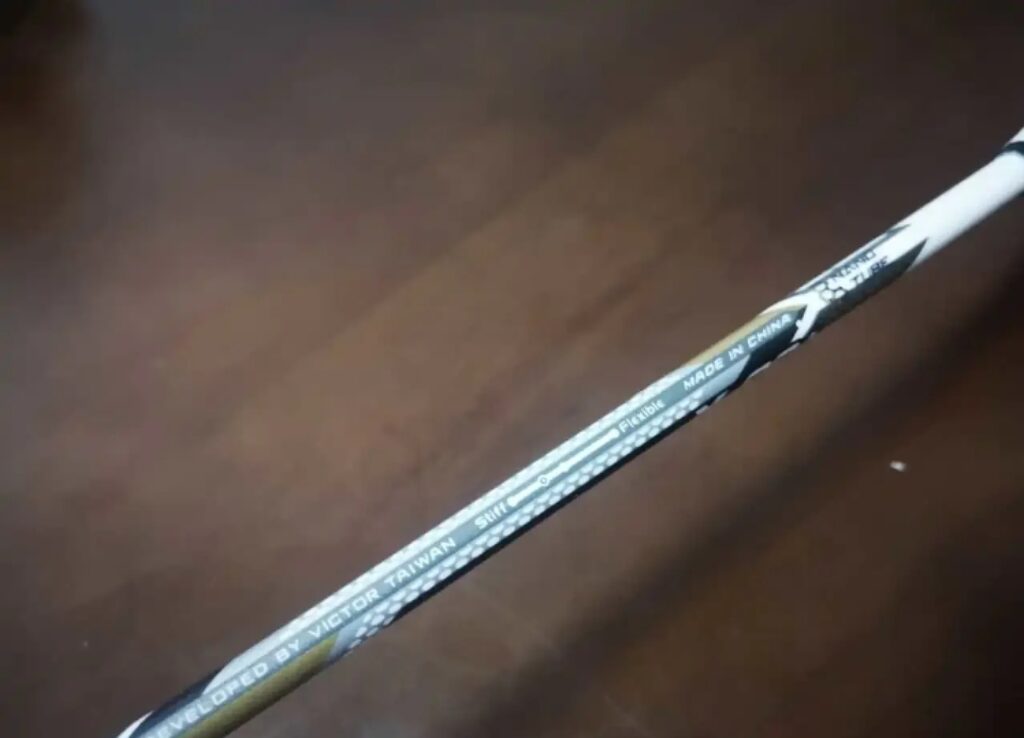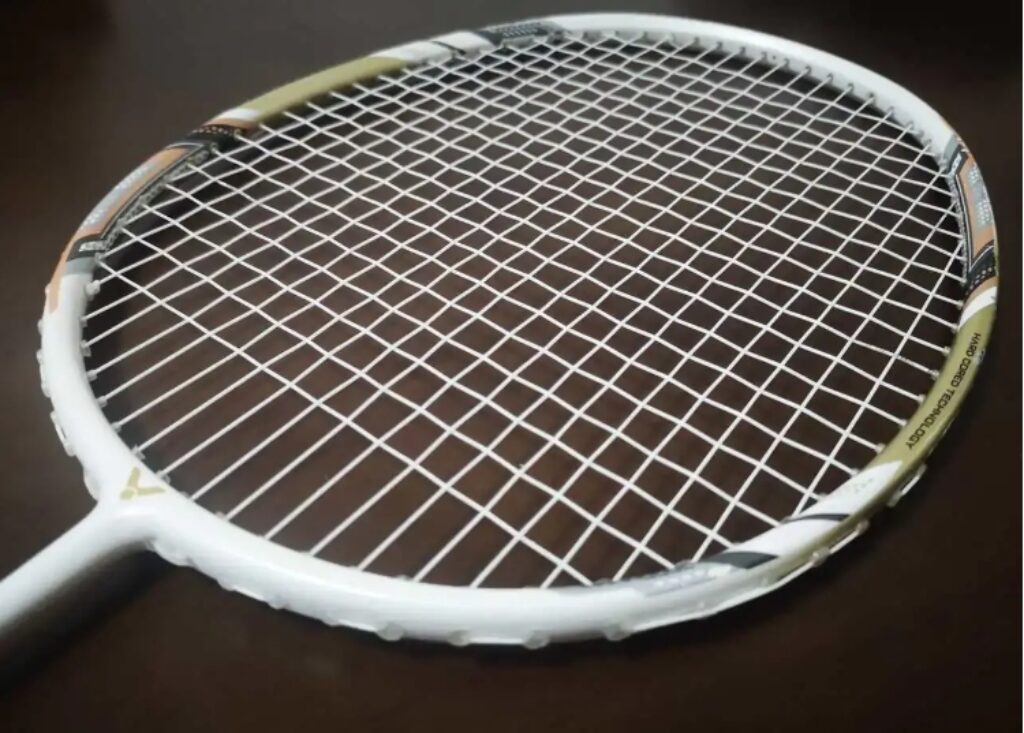Here we are again with another mid-range model from the HX series. This series is vast and complex, so it would seem challenging to complete a comprehensive review. However, as I write, the progress is better than expected—probably because some rackets in this series are easier to acquire, which only underscores the somewhat sad state of the HX line.
HX80L, just looking at its specs, is almost a high-end model, and there’s also a sibling without the “L” suffix. HX20H and HX30 are great entry-level choices, while HX80L… well, it’s more for reference.

Specifications:
4UG5, unstrung weight of 86.4g, balance point 289mm, 6.8mm shaft (220mm long), stiffness rated medium-stiff, tested as medium, diamond aero frame, 8—4 point grommet system, 76-hole stringing pattern, tension warranty of 26 lbs, strung at 24–26 lbs with VBS70.
It’s clear that the HX80L has an attractive appearance. The predominantly white racket, with subtle patterns on the frame aside from its tech features, gives it a fresh look—standard practice to make a racket look more appealing. This aligns with the trend of “L” suffix models being generally aimed at female players. However, as with many brands, the paint job quality starts to show after some use. The prettier the racket, the worse it looks after it gets scratched.
When it comes to dry swings, there’s not much to say—the overall stiffness isn’t high, and the swing feels quite light and agile. It’s a balanced racket but doesn’t feel particularly responsive in hand. Many players may have used the Nanoray 7, so I’ll just say it feels like a slightly lighter Nanoray 7.

The shaft on the HX80L uses the same rebound nanotube technology as the HX100. While the latter felt much stiffer than advertised, the HX80L feels a notch softer than its rated stiffness. If it’s not a formula error, then it’s likely that this shaft’s stiffness degrades more significantly over time. The tech description mentions that this innovation should enhance the shaft’s elasticity, but during overhead clears, it felt like a standard entry-level racket—easy to use with decent swing speed and directional accuracy, but nothing more to note.
I brought both the HX80L and FX04 to my company’s game for testing, switching seamlessly between the two. Comparing them, the HX80L felt slightly stiffer and a bit crisper on shuttle contact. Paired with the relatively hard VBS70 strings, the racket’s control in the frontcourt and net play was quite solid, giving me confidence. Its lightweight nature made it easier to push and flick to the backcourt, creating some offensive opportunities. However, when transitioning to the backcourt for attack, the control-oriented clears weren’t particularly fast. While it’s forgiving, it lacks the element of surprise. Overall, the entire experience felt mild and uneventful throughout testing. It seems that Victory’s 76-hole stringing pattern indeed helps enhance shuttle hold.
As for flat drives and defense, there isn’t much new to say. Like many soft-shaft rackets, its performance was similar to the FX04—probably 90% comparable.

For male players, this racket might feel a bit dull, as there’s nothing exceptional about its offensive quality—quite average. To rule out the possibility that my high-end racket usage was making me overly picky, I swapped with a colleague’s 4U TK15 for smash practice. Both rackets are non-head-heavy, but the smash quality of the HX80L was noticeably inferior. Its continuity was acceptable given its weight and specs, but the smash power left little to be desired. The technology’s advertised benefits, like enhanced elasticity, were not fully realized, except for the slight softness. With a max tension of 26 lbs, if you want to make aggressive shots, switching to more traditional offensive strings is necessary.
I wanted to get some satisfaction from the soft, elastic feedback, but the HX80L struggled to deliver any excitement. When I wasn’t in good form, all I felt was a bland, watered-down sensation.

In summary, the HX80L doesn’t need to overdo it with fancy technology. Its core filling does provide a more stable feel and better control, with good shock absorption, but I didn’t experience any noticeable elasticity enhancement. The soft, balanced feel seems aimed at female players. It feels solid at first, but over time, you’ll notice that its elasticity is better than the HX20H but still falls short of the HX100. Perhaps the shaft’s performance deterioration affects its feel, and it lacks the impact of true high-end models. When considering a mid-range option from the HypernanoX series, the HX80L is an average, middle-of-the-road choice.
Writing this review, I can’t help but think of the Duora 6.

Leave a Reply